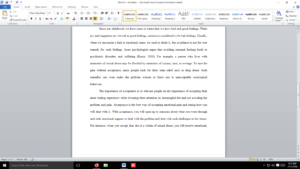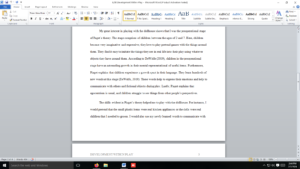Read Chapters 5, 6 & 17 in Understanding Abnormal Behavior Read DSM-5 Cultural Formulation, Anxiety Disorders, Obsessive-Compulsive and Related Disorders & Trauma- and Stressor-Related Disorders
Assignment 3
This assignment focuses on vignette analysis and direct application of course concepts to the persons and situations presented in the vignette for each question. All discussions must take into account the legal and ethical considerations, as well as issues of culture and human diversity that may pertain to the situation presented below. Legal, ethical and cultural information are the course text. Cultural information is also in the DSM 5. You may use alternative resources for culture, law and ethics to enhance your work. You are required to use current, evidence based research taken from professional journals, to support the text material
PRIMARY RESOURCES:
These resources are required to complete the course.
Book
American Psychiatric Association (2013). Diagnostic and statistical manual of mental disorders. (5th ed).
Book
Sue, D., Sue, D. S., Sue, D., & Sue, S. (2016). Understanding abnormal behavior. (11th ed). Cengage.
ADDITIONAL RESOURCES:
These resources must be used to complete the assignments.
Website
DSM-5 Assessment Measures Level I. http://www.psychiatry.org/practice/dsm/dsm5/online-assessment-measures#Level1
Book
American Psychological Association (2020). Publication manual of the American Psychological Association. (7th ed.).
Use the reading assignments from the course textbook thoroughly in an integrative discussion, citing in APA format. In addition to the course textbook and DSM-5, you are also required to use evidence-based research to support and enhance the text information. A minimum of three (3) current research articles must be included. Remember to cite and reference all work according to APA guidelines.
Please keep your responses focused on what is presented in the vignette. Do not add information but use your creativity to support what you see in the vignette as written. Avoid elaborations and assumptions. This assignment MUST be typed, double-spaced, in APA style, 7th edition, and must be written at graduate-level English.
To complete the Vignette Analysis, please use the DSM 5 criteria
Assignment should be 5 pages total plus a title and reference page
Do not include the vignette in your response
Please review the Sample Vignette located under Resources
Vignette One
Steven is a 28-year old Mexican American man. Steven grew up in East Los Angeles where violent gang activity was prominent. The oldest of 3 boys, Steven spent most of his childhood looking out for his 2 younger brothers. Both parents were abusive alcoholics and were “heavy-handed with us kids”. At age 19, Steven moved by himself to a major East Coast city where he attended college and is doing well as an architect. He is currently married to a woman he met in college. The couple is expecting their first child.
Steven comes to therapy upon the suggestion of his primary care physician due to chronic worry, anticipation of failure and fear that he will not be able to financially care for his wife and new baby, in spite of his lucrative and successful career. He also has ruminative thoughts, that that he is a facade and that, “people will find out who I really am.”
Steven tells you that lately he has gotten dizzy when driving on the highway and recently experienced the inability to breathe when at the mall with his wife. He also tells you that sometimes when he closes his eyes, he sees his parents “beating each other up and can hear them screaming.” He also discloses that sometimes he wakes up at night with clenched fists and feels like that scared little boy all over again. Lately he has been unable to leave the house without making sure the door is locked several times and avoids odd numbered streets on the way to work.
Given what you see in the vignette, with consideration of a differential diagnosis formulation, what comorbid disorders may exist? What additional information would you need to confirm your diagnostic impressions? Choose one provisional diagnosis for Steven. Support your provisional diagnosis by comparing the DSM-5 diagnostic criteria to vignette content. (See Sample Vignette Analysis located under Resources for guidance)
Choose 1 theoretical model to explain how you conceptualize Steven’s clinical presentation. From the perspective of this theoretical model, discuss how you would provide clinical treatment for Steven. Integrate vignette content thoroughly in your treatment plan.
(Remember to consider culture, law and ethics when diagnosing and treating)
Assignment Outcomes / Discuss evidence-based research in diagnosis and treatment.
Answer preview
Therefore, some of the critical symptoms of OCD are obsessions and compulsions. The obsessions are comprised of recurrent, persistent, and intrusive thoughts, images, or urges, mostly unwanted. The individuals make attempts to which are intended to suppress, ignore, or neutralize the recurrent and intrusive thoughts. They attempt to eradicate such thoughts, images, or urges using other thoughts or actions (Angelakis, Gooding, Tarrier, & Panagioti, 2015). On the other hand, the compulsions are thoughts or behaviors that occur or actions that an individual undertakes, which are driven by obsessions. Such behaviors or actions are intended to reduce or prevent anxiety, distress. Also, the anxiety or distress are designed to avoid dreadful situations or events.
[2401 Words]

Trauma- and Stressor-Related Disorders











